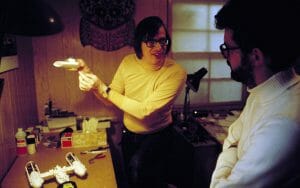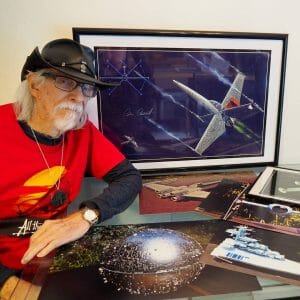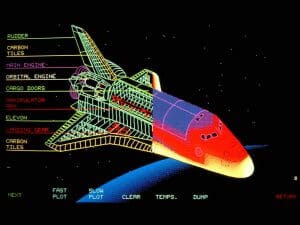Born in San Francisco, Calif., Cantwell had an insatiable curiosity and thirst for knowledge: by the end of the first grade he had gone through all the books in his school’s library; he then moved on to the public library. He studied various fields at the University of California at Los Angeles, which took his suggestion to create a degree in animation. He was the first to graduate from there with such a degree. Landing a job with NASA’s Jet Propulsion Laboratory to create educational material about the Apollo mission, Cantwell ended up being assigned to CBS News anchorman Walter Cronkite to be behind the scenes to feed Cronkite information about Apollo 11. “When they actually landed I was practically in tears,” he said; his nickname on the set was “Hal 9000” because he seemed to know everything. That, and he had meanwhile managed to get a side job on director Stanley Kubrick’s 2001: A Space Odyssey (released 1968), doing some visual effects work. “Cantwell was the creator of the dramatic space opening that followed the film’s iconic Dawn of Man beginning,” Kubrick confirmed. Cantwell even suggested the soundtrack for the opening sequence: Strauss’s “Also Sprach Zarathustra”.

All of which, of course, put him on track for another interesting position: in November 1974, Cantwell was hired by George Lucas for a project he was working on: “Adventures of The Starkiller” — “episode one” of “The Star Wars”. (The script he was given was marked “Copy #4”, and was sold at auction in 2014 for $8,320.) Cantwell’s job: create “vehicles” (mostly space ships) for the film, including the Y-wing fighter, the X-wing fighter, the TIE Fighter, the Star Destroyer, the landspeeder, and the sandcrawler. Plus the most iconic of all: “I didn’t originally plan for the Death Star to have a trench,” he said, “but when I was working with the mold, I noticed the two halves had shrunk at the point where they met across the middle. It would have taken a week of work just to fill and sand and re-fill this depression. So, to save me the labor, I went to George and suggested a trench.” Lucas liked the idea, making it a key plot point in the final film, and gave Cantwell the go-ahead, asking if the extra work would take very long. Uh… certainly not, George! “I have no favorite design,” Cantwell said in 2016. “They all served their individual purposes.” His formula, he said, was “80 percent looks, 10 percent aerodynamics, 10 percent whimsy.”


Cantwell also worked on Close Encounters of the Third Kind (1977), Buck Rogers in the 25th Century (1979), and later did consulting work with Hewlett-Packard on its 9845C computer — one of the first PCs with both a color monitor and a light pen for graphics work (enabled in part by a three-plane graphics subsystem with a whopping 32K of RAM for each!) Released in 1980 for $39,500 (the equivalent to about $143,000 today), it was the perfect machine at the time for Cantwell to create the extensive computer graphics for the 1983 film, WarGames, particularly the climactic ending where the WOPR war computer “learns” that there can be no winner in a nuclear war — that “the only winning move is not to play” (video below). Cantwell died at his home in Boulder, Colorado, on May 21, from Alzheimer’s disease. He was 90.
